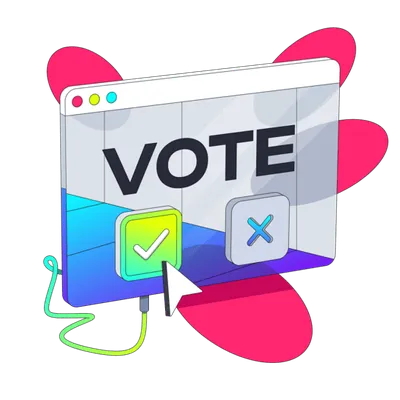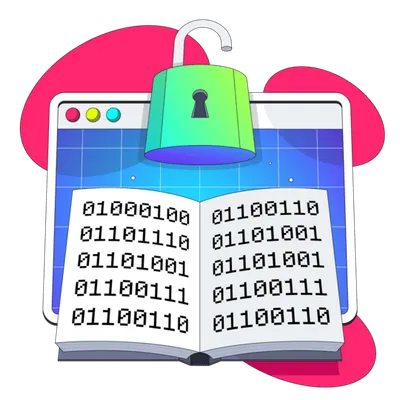Polkadot Community
The Polkadot Ecosystem Club provides a unified collection of key elements shaping the network. It includes a comprehensive directory of DAOs and collectives, highlighting groups that lead governance efforts, manage treasuries, and drive innovation within the ecosystem through its different initiatives.
These collectives represent the collaborative spirit of Polkadot, showcasing how decentralized decision-making enables transparent and efficient project management. Additionally, the hub features details about organizations actively contributing to the ecosystem, including development teams and institutions that work together to build the future of blockchain technology.
A curated list with all relevant Polkadot ecosystem agents (DAOs, People, Validators…) to follow.
All the Polkadot Ecosystem in One Place
Polkadot Community: The 2025 Guide to DAOs, Collectives, and Ecosystem Teams
This expert guide maps the Polkadot Community—its DAOs and Collectives, governance portals, ecosystem organizations, and contributor pathways—so builders and power users can participate effectively in OpenGov, discover the right venues to collaborate, and avoid common pitfalls. Updated September 2025.
What we mean by “Polkadot Community”
“Polkadot Community” spans the on-chain groups that steer the network (OpenGov voters, delegates, DAOs, and Collectives) plus the off-chain organizations and contributor hubs that keep the ecosystem shipping (forums, portals, dev teams, grant programs, media, and public goods). The backbone is OpenGov, Polkadot’s on-chain governance, and the Collectives system chain hosting purpose-built groups that serve the network.
ELI5: How the community self-governs
- Anyone can vote or delegate. You can vote directly on referenda or delegate per track (technical, treasury, root, etc.) to experts you trust—a model called multirole delegation.
- Specialized teams exist on-chain. The Collectives chain hosts groups like the Technical Fellowship (runtime maintainers/engineers) and the Polkadot Alliance (ecosystem standards and anti-abuse norms).
- Everything is auditable. Proposals, votes, and outcomes are on-chain; explorers and forums make it easy to follow along.
Landscape overview
Collectives (Fellowship & Alliance)
The Polkadot Collectives live on the Collectives system parachain and exist only on Polkadot (no Kusama equivalent).
- Polkadot Technical Fellowship: Core runtime maintainers and technical stewards; manages membership/ranks and can expedite urgent but safe upgrades via whitelisting mechanisms.
- Polkadot Alliance: An on-chain collective established by leading parachain teams to uphold developer standards, ethics, and anti-abuse norms (brand integrity, code reuse etiquette, scam reporting).
DAOs, bounties & working groups
OpenGov funds work via bounties and programmatic DAOs (grants, initiatives, maintenance). Examples include anti-scam operations, documentation and education efforts, and infrastructure upkeep. Experimental governance programs—such as Decentralized Voices (DV)—delegate voting power to diverse community members and organizations to improve signal quality and reduce voter apathy.
Organizations & institutions
- Web3 Foundation (W3F): Research, grants, ecosystem support, and public-goods funding pathways.
- Parity Technologies: Maintains the Polkadot SDK and drives core protocol development alongside community contributors.
- Ecosystem vendors & labs: Third-party teams increasingly own and maintain critical tooling, illustrating distributed stewardship (e.g., developer portals, explorer stacks, monitoring).
Governance & participation portals
- Polkadot Forum: Long-form debate and proposal incubation with moderation and topic categories.
- Polkassembly and Subsquare: Proposal explorers and voting portals; both support comments, notifications, and per-account governance dashboards.
- Delegation dashboard: A discovery interface to find per-track delegates and manage multirole delegation profiles.
How it works: OpenGov in practice
OpenGov is track-based governance—different classes of referenda (e.g., Root, Treasury, Technical) run in parallel with tailored parameters (origins, deposit/decision rules, and timeframes). Token holders may vote directly or delegate per track using multirole delegation; conviction and lock periods align incentives without surrendering custody.
Treasury flows are transparent: regular treasury updates summarize balances, liabilities, and program spend (e.g., Fellowship compensation, SDK maintenance, public-goods bounties). For proposers, these reports inform scope, milestones, and budgeting. For voters, they provide a baseline for impact evaluation.
Mini-guide: Join, delegate, contribute
Step 1 — Orient & observe (30–60 min)
- Skim the OpenGov docs and the delegation overview.
- Read current hot proposals on governance explorers.
- Lurk key Forum threads to understand norms and past decisions.
Step 2 — Set your identity & safety (15–30 min)
- Register a recognizable on-chain identity.
- Review anti-scam guidance and wallet hygiene before interacting with unknown calls.
Step 3 — Delegate per track (20–30 min)
- Use a delegation dashboard or explorer to assign per-track delegates (e.g., technical to engineers, treasury to budget-savvy reviewers).
- Revisit quarterly or when your priorities change.
Step 4 — Vote or propose (ongoing)
- Cast direct votes with conviction when you have strong views.
- If proposing, match scope to treasury realities; include clear KPIs, milestones, monitoring, and maintenance plans.
Step 5 — Contribute to a Collective or bounty (ongoing)
- Engineers can apply for Fellowship ranks and participate in runtime reviews.
- Community and dev-rel leaders can join the Alliance to champion standards.
- Join or start a bounty focused on measurable user protection, documentation, or infrastructure reliability.
Comparison table: Governance & community tools
| Tool / Portal | Primary purpose | Can vote? | Delegations | Discussion style | Notable extras |
|---|---|---|---|---|---|
| Polkassembly | Explorer for referenda; discussion hub | Yes | Basic delegate flows | Threaded comments | Multi-network views, notifications |
| Subsquare | Explorer + account tools | Yes | Clear expired votes; profiles | Threaded + dashboards | Active feeds, referenda filters |
| Delegation Dashboard | Find/assign delegates per track | Indirect (via delegates) | Per-track (multirole) | Delegate profiles | Built for OpenGov’s track model |
| Polkadot Forum | Long-form proposal incubation | No | No | Essays, RFCs | Governance category with norms |
Common pitfalls & pro tips
-
Pitfall: Delegating “to a friend” on all tracks. Pro tip: Use multirole delegation; assign technical tracks to technical delegates, treasury tracks to finance-savvy delegates. Review quarterly.
-
Pitfall: Skipping due diligence on proposals. Pro tip: Read treasury updates and prior outcomes to calibrate budgets and scope. Compare proposals against prior art and maintenance plans.
-
Pitfall: Ignoring safety. Pro tip: Bookmark anti-scam guidance; never sign unknown calls or extrinsics you don’t understand.
-
Pitfall: Treating OpenGov as “fire and forget.” Pro tip: Subscribe to explorer notifications; adjust positions as facts evolve. Good governance is iterative.
-
Pitfall: Overlooking where the real maintainers are. Pro tip: Understand the roles of the Fellowship and SDK maintainers when evaluating technical proposals; weigh their reviews heavily.
FAQs
1) What are Polkadot Collectives? On-chain groups hosted on the Collectives system chain (e.g., Fellowship, Alliance) that serve the network’s long-term health through stewardship and standards.
2) Who maintains Polkadot’s runtime? The Polkadot Technical Fellowship leads runtime stewardship and can assist with urgent-but-safe upgrades via whitelisting flows.
3) How does delegation work? OpenGov supports multirole delegation—holders may pick different delegates per track (technical, treasury, root, etc.), retaining custody of their tokens.
4) Where do I discuss proposals? Use the Polkadot Forum for long-form debate, and governance explorers (e.g., Polkassembly, Subsquare) to follow, comment on, and vote on live referenda.
5) How are scams handled? An Anti-Scam bounty/team and ecosystem safety guidance help surface threats; always verify links/contracts and consider read-only calls first.
6) What funds community work? The Treasury funds bounties, grants, and maintenance; periodic reports summarize balances and spend to keep decisions data-driven.
7) Is there a beginner path to contribute? Yes: start with OpenGov docs, delegate per track, comment on proposals, and join a bounty aligned to your skills (education, devrel, infra, design).
8) Where do I learn staking & validator basics? Use the wiki and staking dashboards to learn NPoS, nomination pools, validator requirements, and operational best practices.
Conclusion
The Polkadot Community blends on-chain governance, specialized Collectives, and a growing constellation of forums, explorers, and working groups. Whether you’re a developer, DAO operator, validator, or power user, start by delegating per track, contributing to discussions, and delivering measurable value through bounties and Collectives. Your participation compounds: better delegates, sharper reviews, safer UX.






